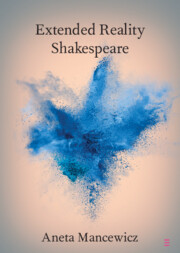Element contents
Extended Reality Shakespeare
Published online by Cambridge University Press: 26 February 2024
Summary
Keywords
- Type
- Element
- Information
- Online ISBN: 9781009043854Publisher: Cambridge University PressPrint publication: 06 June 2024
References
- 3
- Cited by



